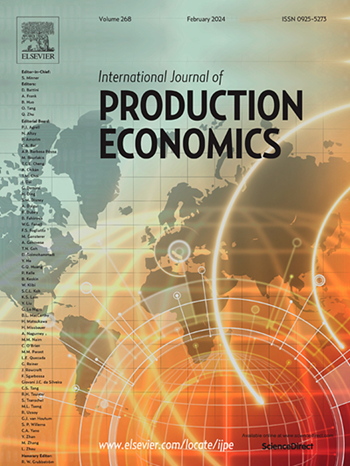Effects of operations executives’ power on shareholder wealth
IF 9.8
1区 工程技术
Q1 ENGINEERING, INDUSTRIAL
引用次数: 0
Abstract
This study investigates the effect of operations executives' power (OEP) within a firm's organizational structure on the firm's shareholder value. In doing so, we employ a multidimensional measure that captures the relative power dynamics within a firm's TMT and is sensitive to shifts in these dynamics, enabling us to more precisely operationalize the power held by operations executives. Further, we link OEP to abnormal stock returns to evaluate the market's perception of operations executives' influence within a firm's TMT, and to idiosyncratic stock returns risk to explore how this influence contributes to the uncertainty in stock returns. In addition, we examine the contingency roles of firm maturity and market turbulence in moderating the OEP–shareholder value relationship. Using a longitudinal dataset of manufacturing firms (SIC 20–39) from 1998 to 2018, our findings reveal that while OEP boosts abnormal stock returns, it negatively impacts idiosyncratic stock returns risk. Additionally, firm maturity reduces the positive (resp., negative) effect of OEP on abnormal stock returns (resp., idiosyncratic stock return risk), whereas market turbulence enhances the positive (resp., negative) effect of OEP on abnormal stock returns (resp., idiosyncratic stock returns risk). These findings contribute to a deeper understanding of the dynamic interplay between operations executives' influence, firm characteristics, and market conditions in driving shareholder value.
运营高管权力对股东财富的影响
本研究探讨企业组织结构中营运主管权力(OEP)对企业股东价值的影响。在此过程中,我们采用了一种多维度的测量方法,捕捉公司TMT中的相对权力动态,并对这些动态的变化敏感,使我们能够更精确地操作运营高管所拥有的权力。此外,我们将OEP与异常股票收益联系起来,以评估市场对运营高管在公司TMT中的影响力的看法,并将其与特殊股票收益风险联系起来,以探讨这种影响如何导致股票收益的不确定性。此外,我们还考察了企业成熟度和市场动荡在调节oep -股东价值关系中的偶然性作用。利用1998年至2018年制造业企业的纵向数据集(SIC 20-39),我们的研究结果表明,虽然OEP促进了股票异常收益,但它对特殊股票收益风险产生了负面影响。此外,企业成熟度降低了企业的正向回报。(1) OEP对股票异常收益的负向影响。而市场动荡则增强了正收益风险。(1) OEP对股票异常收益的负向影响。(如特殊股票回报风险)。这些发现有助于我们更深入地了解运营高管的影响力、公司特征和市场状况在推动股东价值方面的动态相互作用。
本文章由计算机程序翻译,如有差异,请以英文原文为准。
求助全文
约1分钟内获得全文
求助全文
来源期刊
CiteScore
21.40
自引率
7.50%
发文量
266
审稿时长
52 days
期刊介绍:
The International Journal of Production Economics focuses on the interface between engineering and management. It covers all aspects of manufacturing and process industries, as well as production in general. The journal is interdisciplinary, considering activities throughout the product life cycle and material flow cycle. It aims to disseminate knowledge for improving industrial practice and strengthening the theoretical base for decision making. The journal serves as a forum for exchanging ideas and presenting new developments in theory and application, combining academic standards with practical value for industrial applications.

 求助内容:
求助内容: 应助结果提醒方式:
应助结果提醒方式:


